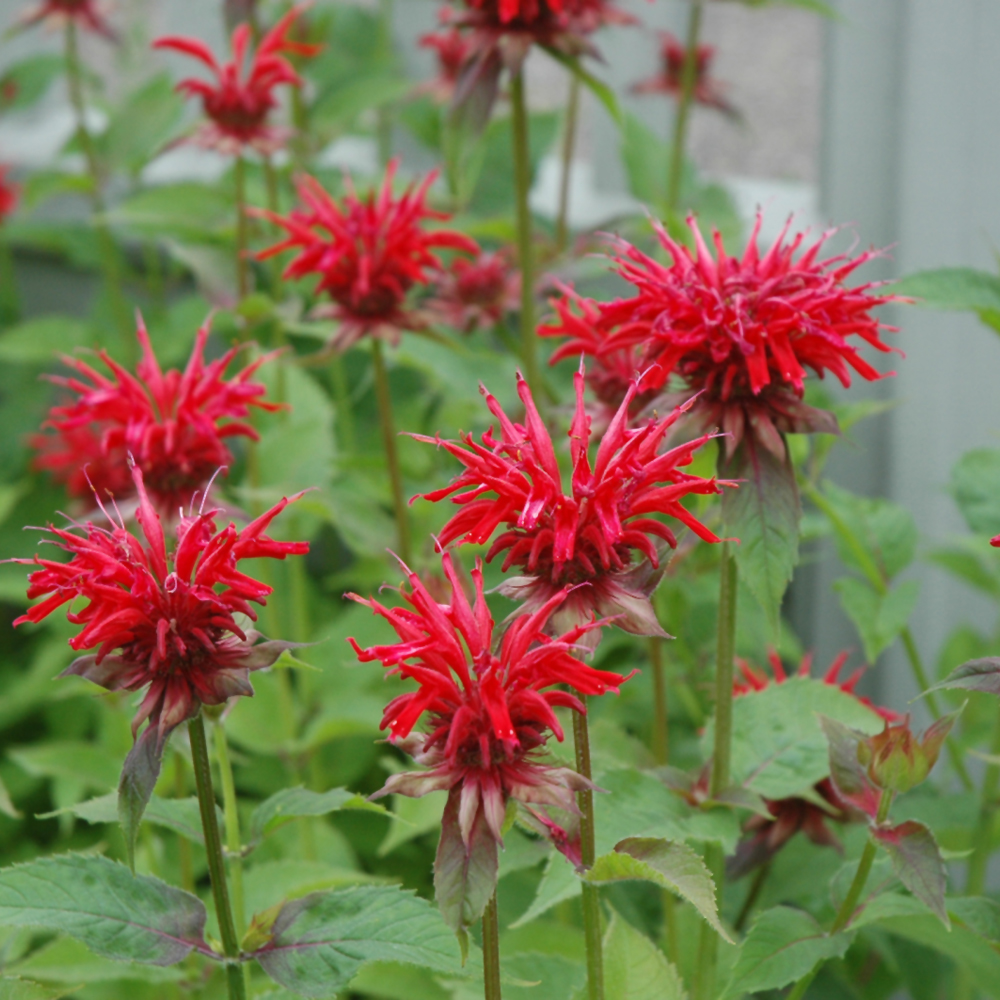
By the time July comes around summer is in full swing, and the choice of perennials that could be highlighted is large, so to compile a short list means I will end up ignoring plenty of worthwhile plants. Therefore, I have chosen a few eye-catching perennials and favorites of mine.
Leopard plant (Ligularia) provides a bright splash of yellow with its stems of multiple yellow flowers. Commonly known as leopard plant as some species have spotted leaves this trait seems to have been lost among cultivars. ‘The Rocket’ is a tall variety reaching 3-5’ tall when given its preferred location of moist partial to full shade and has tall golden flower stalks. ‘Othello’, and ‘Britt-Marie Crawford’ have much smaller flower spikes and overall height but set them off with deep bronze and burgundy foliage respectively giving a nod to the leopard name.
While carex hachioensis ‘Evergold’ does not produce showy flowers, its eye-catching striped cream and green leaves bring brightness to shade gardens. It is a clumping grass making graceful mounds about 12-18” tall. Another lover of moist conditions, it will also be happy with average moisture. Pair with astilbe for a winning mid-summer combo.
If you are looking for an unusual shade perennial Fingerleaf Rodgersia (Rodgersia aesculifolia) can provide a bold statement. Ideally suited for rain gardens or other moist areas it can attain a height and width of 3-5 feet. Its large leaves are crinkled and rough-surfaced and it gets its common name as their appearance resembles splayed fingers on a hand. As well as its striking foliage, it produces clusters of creamy-white, scented flowers in mid-summer, similar in appearance to astilbe flowers.
For those with sunny spots to fill you can’t beat Allium ‘Millenium’ as it provides weeks of mid-summer blooms on a compact clumping ornamental onion and reaches a neat and tidy 12” tall and wide. Immensely popular with bees, it makes a good addition to pollinator gardens.
Beebalm (Monarda spp.) is listed as a salve for bee stings among its medicinal uses, but for New England pollinators it is a real draw. Whether the tall ‘Jacob Cline’ with its red flowers which resembles the species Monarda didyma, or the many cultivars coming in a variety of sizes and offering bright magenta like ‘Rockin’ Raspberry’ or candy pink like ‘Balmy Pink’ there is a size and color of beebalm to suit a sunny spot.
Lobelia cardinalis is another native plant with those bright red flowers that are loved by hummingbirds. Also appreciating sun, it can make a striking statement in a perennial border. And if the species is not stunning enough, the cultivar ‘Black Truffle’ marries the brilliant red flowers with deep burgundy foliage to bold effect. For a patriotic effect, plant it with blue lobelia (Lobelia spicata) and liatris Floristan White.
And if you are looking for another native plant that also has that pop of bright color look no further than Spigelia marlandica ‘Little Redhead’. An elegant perennial with an overall height of 24”, it has clusters of red tubular flowers which are yellow on the inside. It gets its common name of Indian Pink as its roots were used as dye by native Americans.
These are just a few of the many attractive perennials that can be found to enhance a mid-summer border, why not pay us a visit and discover the other treasures we have!
Photo credit: iFiSTudio – stock.adobe.com









